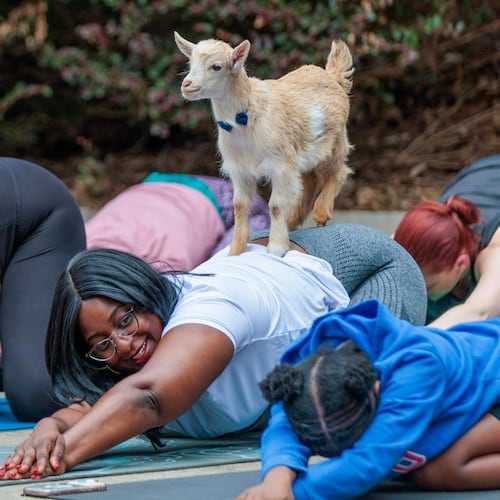This fall, the High Museum will host its own version of a G8 summit. Simultaneous exhibits from the Louvre, London's Victoria & Albert Museum and terra cotta soldiers from China embody the High's well-established strategy of importing art from great museums around the world to fill its galleries.
In contrast, the newly opened "Road to Freedom: Photographs of the Civil Rights Movement 1956-68" is an in-house show about a home-grown subject, drawn largely from a cache of 250 photos recently acquired for the museum's permanent collection.
Yes, blockbusters like "Soldiers" offer great experiences for the visitor and benefit the High at the gate. I predict, however, that "Road" will prove in the long run to be the more important project.
The exhibition and the larger photography collection are already earning the museum major institutional credibility.
"It's great to see an art museum take the initiative to collect this material," said Randall Burkett, Emory University's curator of African-American collections. "It puts the High in the center of a network in Atlanta and around the country."
The photographs will contribute to Atlanta's growing reputation as a repository for civil-rights material. In concert with collections at local universities and libraries, the acquisition of Martin Luther King Jr.'s papers and a planned civil rights museum, the photographs will help make the city a formidable center for study.
In addition, the exhibition and the collection should help the museum in its effort to better serve and draw the African-American community.
This is hardly the first sign of the High's commitment to African-American art, artists and subject matter, but it is more tangible for the average museum-goer than say, the annual Driskell Prize —- awarded to artists and scholars —- or the hiring of a part-time curator of African art.
Of course, this promising future is dependent on the quality of the product. Kudos to photography curator Julian Cox for his distinguished work. Soup to nuts, it's his project.
It was his idea to build the collection, and his inspiration to include material not normally the province of art museums. It was his dogged search for photos that took him to basements and police files, photographers' studios and civil rights activists' homes, and led him to undiscovered photographers and photos never published before.
Deborah Willis, a photography historian specializing in African-American subjects, praised the collection.
"I'm impressed by its breadth," says the New York University professor, whose son, Hank Willis Thomas, has work in "After 1968," a concurrent show at the High. "There was such a range of sources and photographers, and some I didn't know."
Contributions to the field build respect within the museum community, which can benefit the High when it asks for loans, traveling shows or scholarly collaboration.
Bringing art from other museums is a wonderful and time-honored way to serve the community and build its understanding, but the "Road" project is a gift that will keep on giving long after the terra cotta soldiers march home.
ON EXHIBIT
"Road to Freedom: Photographs of the Civil Rights Movement 1956-1968."
Through Oct. 8. $18; $15, seniors and students with IDs; $11, children 6-17; free, members and children 5 and younger. 10 a.m.-5 p.m., Tuesdays, Wednesdays, Fridays, Saturdays; until 8 p.m. Thursdays; 12-5 p.m. Sundays. High Museum of Art. 1280 Peachtree St. 404-733-4444; www.high.org.
ONLINE: Read Catherine Fox's review of "Road to Freedom." At accessAtlanta.com/arts.
About the Author
Keep Reading
The Latest
Featured

